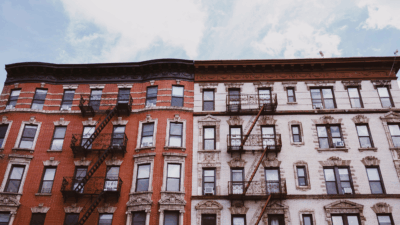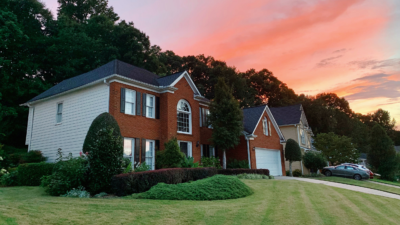
Sign up for smart news, insights, and analysis on the biggest financial stories of the day.
Go ahead and work from home all you want. Just know you’re making matters even worse for banks, which have enough problems right now.
Fund managers are flagging the next domino to topple in the ongoing liquidity crisis: commercial real estate, which, surprise surprise, continues to struggle in the post-pandemic, work-from-home era — and is propped up by loans owed primarily to regional banks. But not everyone in the sector is experiencing the same pain. In fact, the very same pandemic forces have made the suburbs… cool?
Crying Like It’s 1991
If the doomsayers are to be believed, the $20 trillion-plus commercial real estate sector may be headed for its biggest bust since the early 1990s — back when the Fed took a sudden u-turn on longstanding low-interest rates, crunching both banks and overleveraged real estate developers hooked on cheap cash. Nearly 300 banks failed between 1990 and 1991, according to the FDIC. Citibank nearly went under. History, it sure seems, has a nasty habit of repeating itself.
Rising interest rates are creating a similar crunch today, exacerbated by scores of office buildings abandoned by couch-loving laptop warriors. And the bill is about to come due on the industry’s pile of debt. “There’s a maturity cliff for a lot of this real estate in the next few years, a significant portion of which is funded by regional banks,” one anonymous chief executive of a large US bank recently told the Financial Times. “Commercial real estate is leverage on leverage on leverage . . . if people are forced to quickly unwind that leverage it can pop up in other places.”
Still, the sector — and the small and mid-size banks that own roughly 70% of commercial real estate loans — may have a ringer in the mix this time around. It’s a little place called Suburbia, USA:
- Out-of-city retail spaces are seeing a massive resurgence. Both Site Centers and Phillips Edison, two large shopping center owners, reported record high occupancy and leasing in first-quarter earnings reports.
- Meanwhile, mall purveyors Simon Property Group says overall occupancy rate is over 94%, a hair short of pre-pandemic norms, while foot traffic is up from last year.
In fact, according to real-estate firm CBRE, the second half of 2022 marked the first time since at least 2013 that urban retail space vacancies surpassed suburban levels. Maybe all your friends who ditched city life were right.
Nowhere Like New York: At least one group is enjoying the New York exodus: the ultra-rich, who see the vacuum forming from fleeing institutional players as a once-in-a-lifetime chance to own a piece of the New York skyline on the cheap. Of the eleven New York office building acquisitions in the last six months of 2022, seven were by wealthy individuals, smaller developers, or family-run companies, according to a recent Bloomberg report of Savills data. New York City office buildings: the Hermes handbags of commercial real estate.











